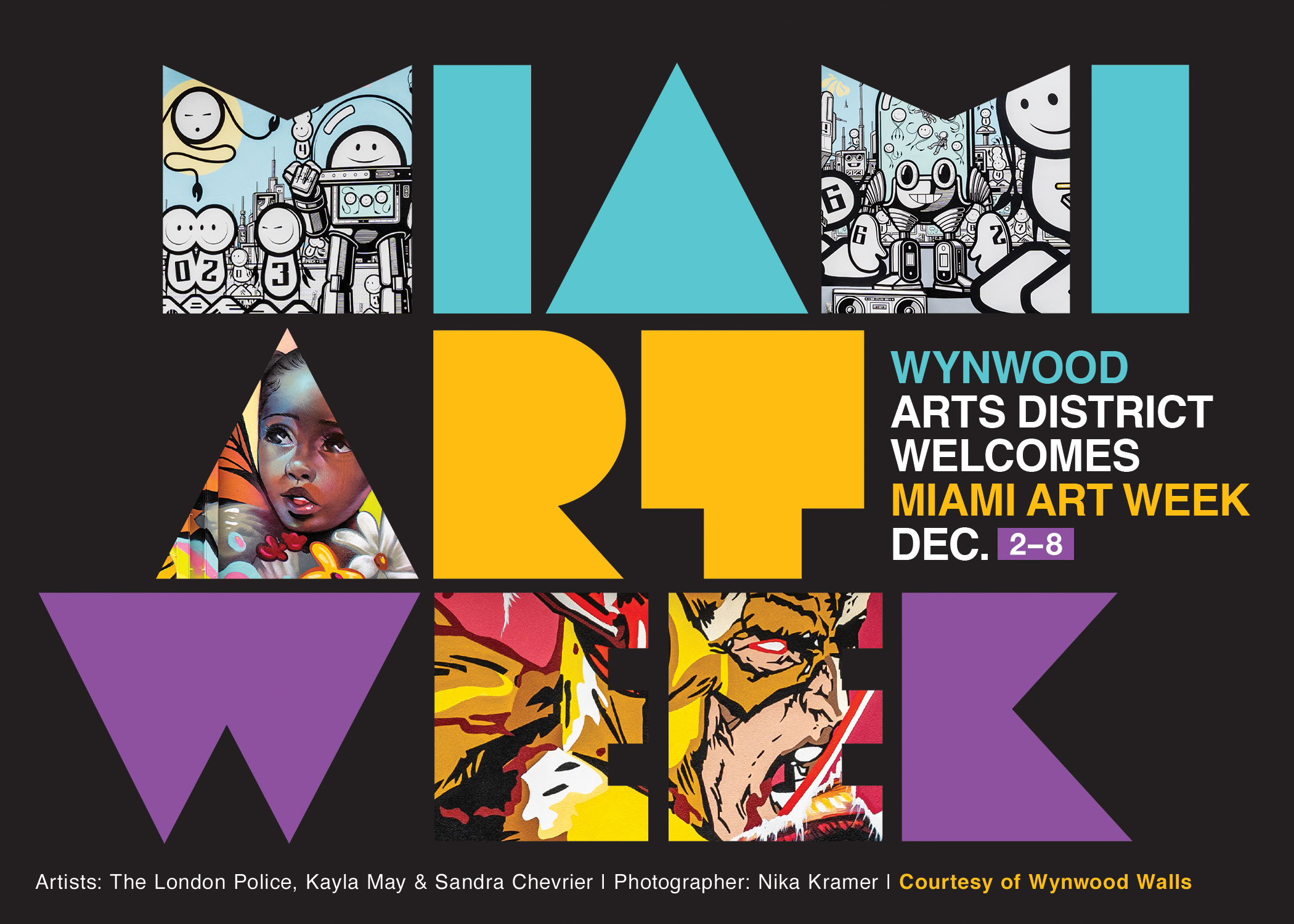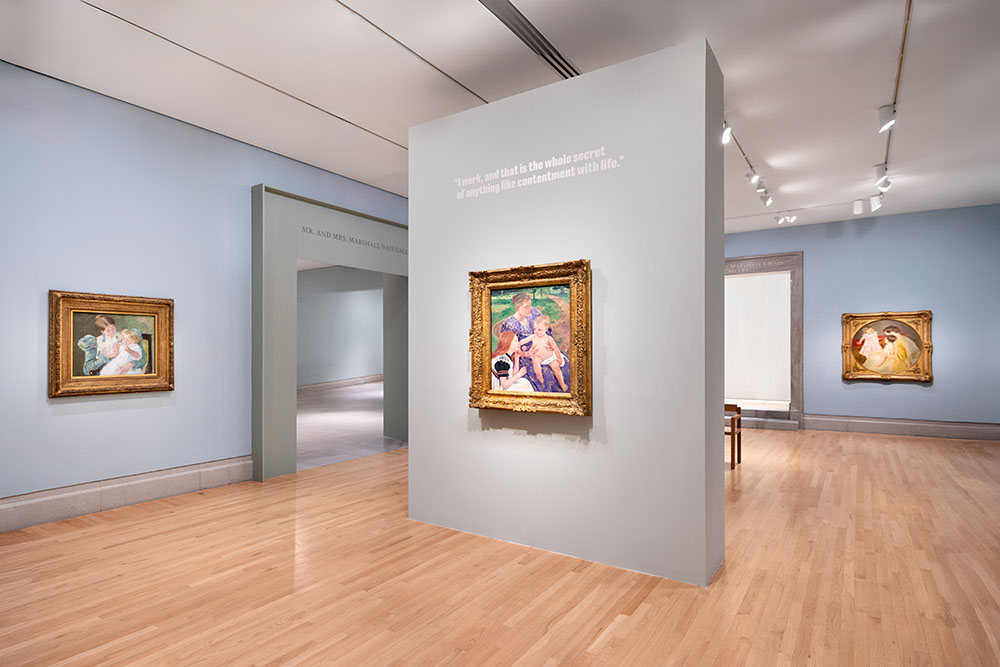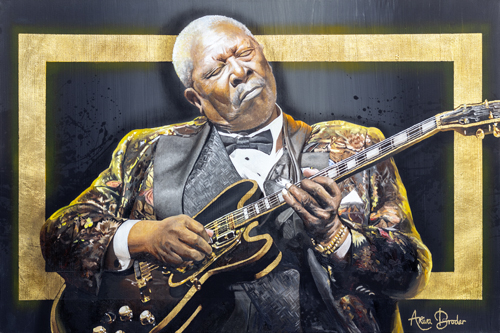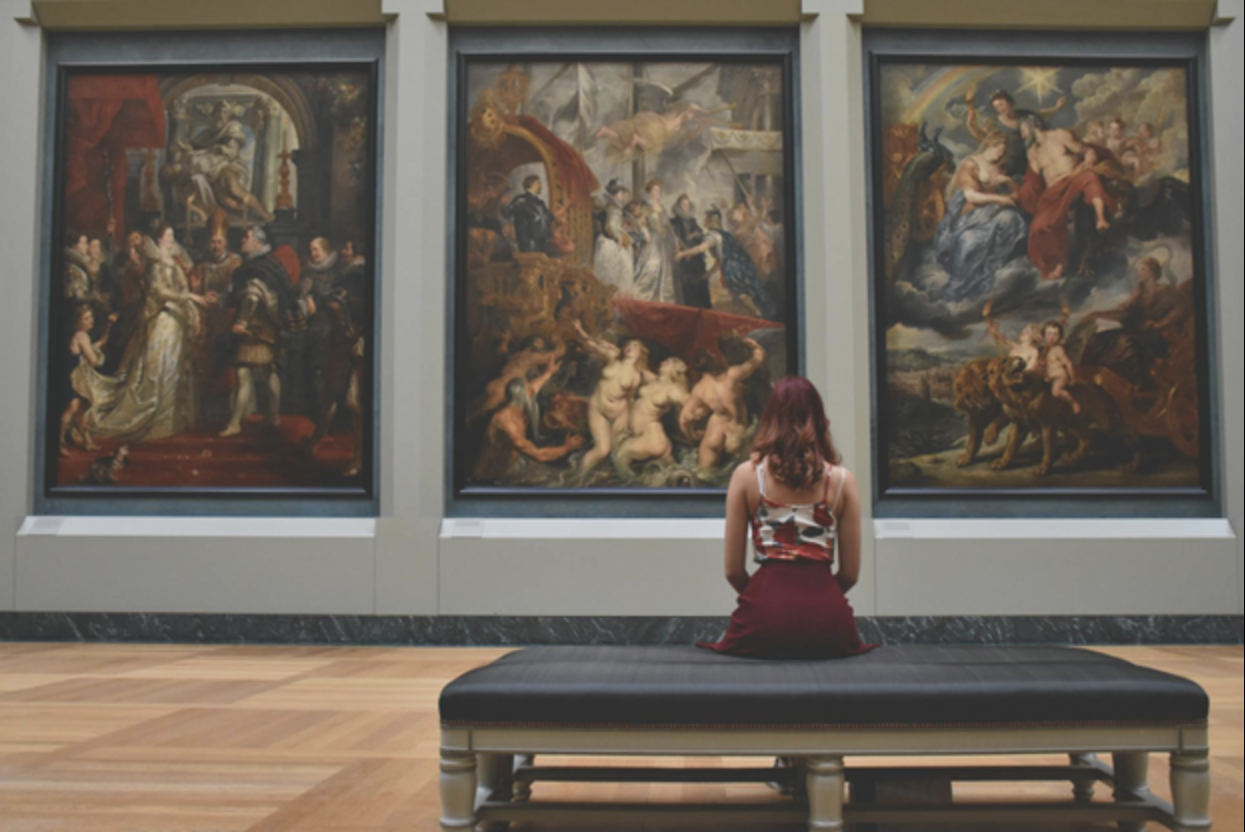Category: marketing
ART TREKS: Miami Art Week 2024 at Wynwood
[ad_1]
Spectrum Miami and Red Dot Miami
When: Dec. 4-8
Where: MANA Wynwood Convention Center (318 NW 23rd St., Miami, FL 33127)
Head on over to the MANA Wynwood Convention Center, where Spectrum Miami and Red Dot Miami will host highly curated exhibitions spanning 150,000 square feet of indoor space.
Spectrum Miami will feature special programs that showcase exhibitors, art industry professionals, and select nonprofits and institutions. One of their featured programs, The Discoveries Collection, will spotlight highly collectible works from around the world and showcase some of their favorite affordable pieces ($3,000 or less).
Running alongside its sister fair, Red Dot Miami will offer the unique opportunity to connect with blue-chip galleries and emerging artists under one roof. Their featured programming includes SPOTLIGHT Galleries, which will provide collectors with a focused look at several cutting-edge galleries and their artists, who are recognized for their skill and achievement in the visual arts.
[ad_2]
Source link
Dealer Michael Findlay on Collectors, Curiosity, and Changes
[ad_1]
Michael Findlay started directing gallery programs in 1960s New York and has written about that period in his latest book, Portrait of the Art Dealer as a Young Man: New York in the Sixties.
I talk with Michael about his extensive career and how things have changed over the past 60 years.
He discusses the qualities of a good collector, the evolving relationship between dealer and artist, and the current focus of many collectors on art as investment rather than appreciation. We also talk about the importance of looking—of immersing oneself in the art rather than relying on text and labels.
We finish up with a funny personal story about Andy Warhol.
[ad_2]
Source link
Meet the Artist: Linda Roberts
[ad_1]
ABN: Where can we find you when you’re not working?
Roberts: In a sense, I’m always “working.” But, when I’m not out photographing, you might find me at my gallery in Helena, exploring different ways to present art, studying encaustic art, or even making pottery at the clay studio. Or cooking!
ABN: What’s something that has enhanced you as an artist?
Roberts: I have recently been pursuing a different photographic technique called ICM, which utilizes a long exposure and intentional movement of the camera. It’s a great way to pull light and lines to get wonderful abstract images with one exposure. I like to call it “bending light.” I think any time you explore different aspects of your art, or different genres of art, it enhances your primary art medium.
ABN: What are your plans for 2025?
Roberts: In addition to exploring Montana, I have a couple of projects for 2025. One is to create a photo essay that documents the creation of a rawhide riata. I met an elderly gentleman who has done this rawhide work for many years. It’s fascinating and I’m working with him to document that. The other documentary project I’m working on is to photograph Missouri’s springs and grist mills—many of which are in the area that I’m from and have familial significance. Somewhere in these projects, art pieces will also be created.
[ad_2]
Source link
ART TREKS: Legion of Honor—Mary Cassatt at Work
[ad_1]
The “Modern Madonna”
During the last 15 years of her life, Cassatt became increasingly focused on creating artwork about women and children. This mother-and-child imagery helped Cassatt start a conversation around Old Master precedents—specifically, the religious images of the Madonna and Christ Child depicted by Italian Renaissance masters.
But Cassatt’s ability to create endlessly varied compositions from this theme also connects her late work to fellow Impressionists Claude Monet and Paul Cézanne, who treated the same subjects (water lilies and apples, respectively) again and again.
Event details:
Where: Legion of Honor (100 34th Ave., San Francisco, CA 94121)
When: Oct. 5, 2024-Jan. 26, 2025
Hours: 9:30 am-5:15 pm, Tuesday through Sunday; Closed on Mondays
Tickets: $20 for adults, $17 for seniors (65+), $11 for students (w/ valid ID), Free for youth (17 and under) and Legion of Honor members
Pro tip: Skip the line and book your tickets online.
[ad_2]
Source link
ART TREKS: De Young Museum—Tamara de Lempicka
[ad_1]
About the exhibition
Where: Legion of Honor (100 34th Ave., San Francisco, CA 94121)
When: Now through Feb. 9, 2025
Hours: 9:30 am-5:15 pm, Tuesday through Sunday; Closed on Mondays
Tickets: $20 for adults, $17 for seniors (65+), $11 for students (w/ valid ID), Free for youth (17 and under) and Legion of Honor members
Tamara de Lempicka is the first scholarly museum retrospective of the artist’s work in the U.S., exploring Lempicka’s artistic influences and revealing the process behind works that have become synonymous with Art Deco.
After its presentation at the de Young, the exhibition will travel to Houston and be on display at the Museum of Fine Arts, Houston, March 9 through May 26, 2025.
PRO TIP: Skip the line and book your tickets online https://www.famsf.org/visit/de-young-tickets-hours
[ad_2]
Source link
The Importance of Branding for Artists Online – How to Sell Art Online
[ad_1]
If you are an artist, you should already know how difficult it is to enter the sales world. From painters and visual artists to photographers and illustrators, as well as gallerists and curators, the need for a distinct brand has never been more critical.
Branding is not just about a logo or a catchy tagline; it’s the essence of how artists present themselves to the world. In this article, we will explore the importance of branding for artists and how it can significantly influence their success across both physical and digital spaces.
Understanding Branding
At its core, branding is the process of creating a unique identity for a product or individual. For artists, this involves defining who they are, what they stand for, and how they want to be perceived by their audience. Effective branding goes beyond visual elements; it encompasses the artist’s style, message, values, and the emotional connection they create with their audience.
Why Branding Matters
Differentiation in a Crowded Market
The internet is teeming with talented artists, making it crucial to stand out. A strong brand helps artists differentiate themselves from their peers. This differentiation can come from various factors, such as unique artistic style, storytelling ability, or the themes they explore in their work. By establishing a clear brand identity, artists can carve out a niche for themselves, making it easier for people interested in their art to discover and remember them. If you’re looking for ways to build a unique artist brand, these strategies can help you stand out.
Building Trust and Credibility
Branding fosters trust. When artists consistently present themselves in a professional manner, they build credibility with their audience. For more on enhancing your professional image, check out how to create a Facebook page for your art. This is especially important in an age where audiences are bombarded with content and seek authenticity in the artists they support. A well-defined brand can reassure potential art buyers that they are engaging with a serious artist rather than just another fleeting online presence.
Creating Emotional Connections
Branding is about storytelling. It allows artists to share their creative journey, artistic values, and the inspiration behind their work. When artists share their stories, they create emotional connections with their audience. Learn how to use storytelling to sell your art and deepen these connections. People interested in your artworks are more likely to support artists whose stories resonate with them. This emotional bond can lead to increased loyalty, engagement, and ultimately, sales.
Enhancing Marketing Efforts
A strong brand makes marketing more effective. Artists can leverage their branding across various platforms, ensuring a consistent message that resonates with their target audience. Whether it’s through social media, email newsletters, or a personal website, a cohesive brand presence can streamline marketing efforts and improve overall visibility. Consider these tips on email marketing for artists to further enhance your outreach. When your audience recognizes an artist’s brand, they are more likely to engage with their content and share it with others.
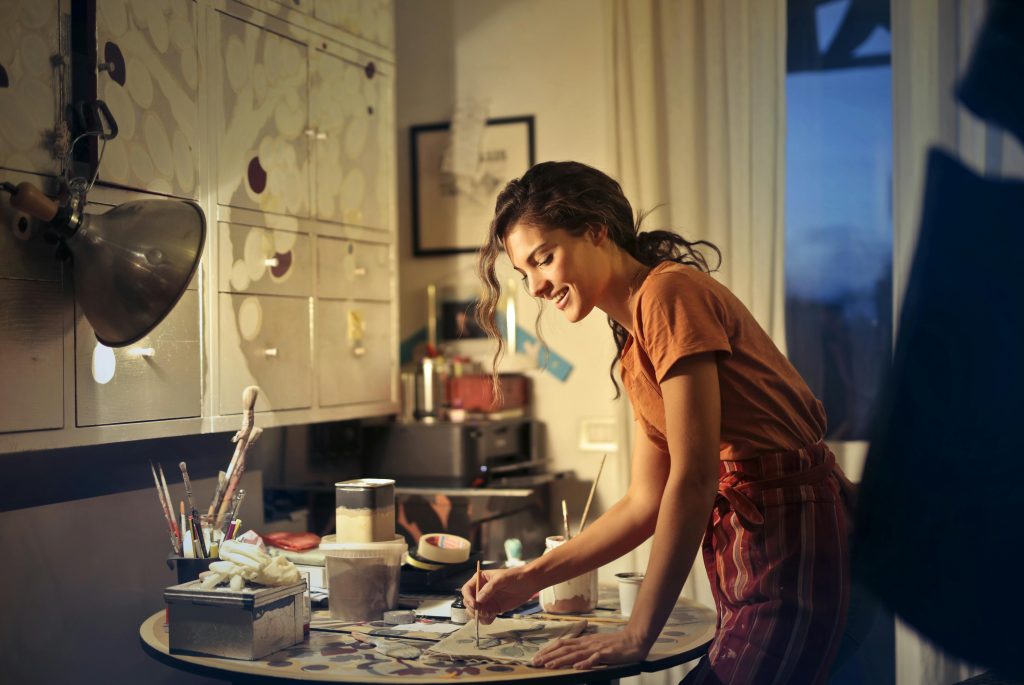
Key Elements of Effective Branding for Artists
Visual Identity
The visual aspects of branding, including logos, color schemes, and typography, play a vital role in establishing an artist’s presence. These elements should reflect the artist’s personality and artistic style. For example, a painter specializing in vibrant landscapes might choose a palette of bright colors and flowing, natural shapes that reflect the essence of their work. Consistency in visual identity across all platforms strengthens brand recognition.
Artistic Voice and Style
An artist’s voice is an integral part of their brand. This encompasses the themes, messages, and emotions that resonate in their work. Explore more on developing a unique artistic style and how it can define your brand. Artists should strive to develop a unique style that sets them apart from others. This may involve experimenting with different mediums, techniques, or narratives. A distinct artistic voice helps in attracting the right audience and establishing a loyal following of people interested in their work.
Online Presence and Engagement
In the digital age, an artist’s presence across digital platforms is crucial. This includes having a professional website, active social media accounts, and a portfolio that showcases their work. Engaging with fans and followers is also vital. Artists should respond to comments, share behind-the-scenes content, and create a dialogue with their audience. This interaction not only humanizes the artist but also fosters a sense of community.
Storytelling
Effective branding involves compelling storytelling. Artists should share their journey, inspirations, and the process behind their work. This not only makes the artist relatable but also enriches the audience’s experience. Stories can be shared through blog posts, social media updates, or video content. By weaving narratives into their branding, artists can captivate their audience and encourage them to invest in their journey.
Consistency Across Platforms
Consistency is key in branding. Artists should ensure that their branding is cohesive across all platforms, from social media and their personal website to physical promotional materials used in galleries and art shows. This consistency helps reinforce their identity and makes it easier for their audience to recognize them. Additionally, a cohesive brand presence builds trust and professionalism, further solidifying the artist’s reputation in the online space.

The Impact of Branding on Sales and Opportunities
A well-established brand can significantly impact an artist’s ability to sell their work and attract opportunities. When people interested in your artworks feel a connection to an artist’s brand, they are more likely to purchase artwork, prints, or commissioned pieces. Additionally, a strong brand can lead to collaboration opportunities, sponsorships, and even gallery shows. For personalized support in growing your art business, explore our business coaching for artists services. Artists who effectively leverage their branding can expand their reach and create multiple income streams.
Branding is an essential aspect of success for online artists. It serves as the foundation for differentiation, trust-building, emotional connection, and effective marketing. By understanding and investing in their brand, artists can create a unique identity that resonates with their audience and propels their careers forward in both physical and digital realms. As the digital landscape continues to evolve, those who prioritize branding will be better positioned to navigate challenges, seize opportunities, and leave a lasting impact on the art world.
[ad_2]
Source link
Moving Large-Scale Art Pieces – Art Business News
[ad_1]
Moving large-scale art pieces is no small feat. These magnificent works require special handling, meticulous planning, and expert execution. Whether you are an artist, gallery owner, or art dealer, understanding the intricacies of transporting sizable artworks is essential. This article delves into the unique challenges and considerations of moving large-scale art pieces, offering insights and best practices to ensure a successful transition.
Understanding the Importance of Proper Handling
Handling large-scale art requires more than just strength. The fragility of materials used in these artworks, such as canvas, wood, or glass, makes them susceptible to damage. Improper handling can result in scratches, tears, or structural damage, ultimately devaluing the piece. It’s essential to recognize that the care taken during the moving process can significantly impact the artwork’s condition and longevity.
Assessing the Artwork’s Requirements
Before embarking on the moving process, assess each artwork’s specific requirements. Take the time to evaluate its size, weight, material, and any unique features that might influence how you transport it. For example, heavy sculptures may need specialized equipment for lifting, while delicate paintings may require climate-controlled transportation to prevent warping or cracking. Understanding these factors helps tailor your moving approach to each piece, ensuring optimal care throughout the journey.
Next, consider the piece’s weight. Heavy sculptures or large canvases often require specialized equipment for lifting and transporting. Relying solely on manual labor can lead to accidents or damage, so dollies, hoists, or forklifts may be necessary. It’s also crucial to account for the vehicle’s weight capacity to prevent overloading, which can compromise safety during transit.
Preparing the Artwork for Transportation
Preparation is key when it comes to moving large-scale art pieces. Begin by cleaning the artwork thoroughly to remove dust and debris. This step is crucial, as any particles left on the surface can cause scratches during the moving process. Once cleaned, take detailed photographs of the artwork from multiple angles. These images record the artwork’s condition before the move, providing documentation in case of any damage during transport.
When it comes to packaging, use high-quality materials that provide adequate protection. Consider using custom-made crates or boxes that fit snugly around the artwork for paintings. Use bubble wrap or foam padding to cushion the piece and secure it firmly within the crate. For sculptures or three-dimensional works, ensure the base is stable, and the piece is anchored within the container to prevent shifting during transit. Proper preparation sets the stage for a smooth and safe moving experience.
Engaging Professional Movers Specializing in Art
When it comes to moving large-scale art pieces, it is invaluable to enlist the help of professional movers with expertise in handling artwork. These specialists understand the nuances of transporting art and have the equipment and knowledge to do so safely. They can offer services such as climate-controlled transportation, custom packaging, and insurance options to protect the value of the artwork.
Before hiring a moving company, conduct thorough research. Look for reviews and testimonials from previous clients, particularly those who have moved similar artworks. Inquire about their experience, methods, and safety protocols. A well-established art moving company will have a proven track record of successfully transporting large-scale art pieces, giving you peace of mind.
Ensuring a Safe Transportation Environment
The environment where you transport large-scale art pieces is critical in preserving their condition. Extreme temperatures and humidity levels can cause irreversible damage, particularly to artworks made from sensitive materials. When moving, prioritize climate-controlled transportation options to mitigate these risks. Maintaining a stable temperature and humidity helps prevent warping, cracking, or fading.
If transporting art over a long distance, consider scheduling breaks during the journey to monitor the artwork’s condition. Frequent checks allow you to ensure that everything remains secure and that no environmental factors negatively impact the pieces.
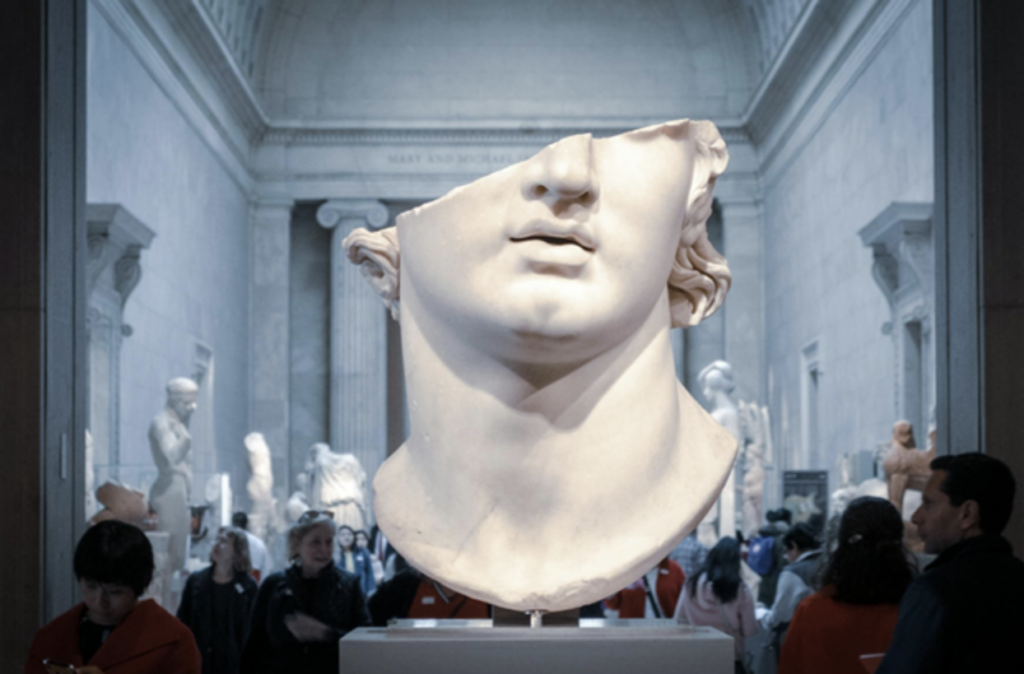
Navigating Logistics and Transportation Challenges
Moving large-scale art pieces involves navigating complex logistics. Planning is crucial, from selecting the right transportation method to coordinating schedules with various stakeholders. Based on the distance and urgency of the move, determine whether you’ll transport the artwork via truck, air, or sea. Each method has its advantages and considerations, so weigh them carefully.
Additionally, communicate with all parties involved, including the artists, galleries, or collectors. Provide updates throughout the process and confirm that everyone is on the same page regarding timelines and expectations. Clear communication helps prevent misunderstandings and ensures a smooth transition.
Managing Installation and Unpacking
Upon arrival at the new location, the work isn’t over yet. Properly installing large-scale art pieces is just as important as the transportation process. Depending on the artwork’s size and complexity, you may need professional installation services. These experts understand the intricacies of securely mounting or displaying large pieces without causing damage.
Before unpacking, ensure the environment is ready to receive the artwork. Check for adequate lighting, stable surfaces, and any necessary tools for installation. Once everything is set, carefully unpack the artwork using the same attention to detail applied during the preparation and packing stages. Take your time during this process to avoid rushing and potentially causing damage.
The Role of Technology in Art Transportation
Technology is significant in transporting large-scale art pieces in today’s digital age. Utilizing digital inventory management systems helps track artworks throughout the moving process, ensuring accountability and transparency. High-resolution imaging technology allows for detailed documentation of the artwork’s condition before and after the move.
Additionally, GPS tracking systems provide real-time updates on the artwork’s location during transport. This feature enhances security and allows for proactive communication with stakeholders regarding potential delays or issues.
Addressing Insurance and Liability Concerns
Insurance is crucial when moving large-scale art pieces. Despite taking all necessary precautions, accidents can still happen. Protecting the value of the artwork with appropriate insurance coverage provides peace of mind throughout the moving process. Work with your insurance provider to ensure adequate coverage that reflects the artwork’s value and any potential risks associated with transport.
When engaging professional movers, inquire about their insurance policies as well. Reputable art moving companies will offer liability coverage in case of damage during transit. Understand the terms and limitations of these policies to ensure you have a comprehensive safety net in place.
Understanding Customs Regulations for International Moves
If your move involves crossing international borders, familiarize yourself with customs regulations regarding art transport. Different countries have varying rules and restrictions on importing and exporting artworks, so it’s crucial to understand these regulations well in advance.
Work with customs brokers or legal advisors experienced in art transport to navigate the complexities of international shipping. They can help ensure that all necessary documentation is in order, including certificates of authenticity, export permits, and import declarations. Properly managing customs requirements streamlines the moving process and helps avoid potential delays.
Embracing the Art of Moving
Moving large-scale art pieces requires a thoughtful and strategic approach. By understanding the unique considerations involved, from preparation and transportation to installation and insurance, you can ensure a smooth and successful moving experience. As art industry professionals, artists, and enthusiasts, prioritizing the care and handling of these valuable works demonstrates your commitment to preserving their integrity. With the right planning and expert support, moving large-scale art pieces becomes a logistical challenge and an artful endeavor.
_______________________________
Author Bio:
Frank Lucido is a moving industry expert at AmeriSafe Moving Services, a reputable moving broker that connects clients with trusted relocation companies. Lucido has developed effective strategies for residential and commercial clients, ensuring a smooth and stress-free moving process. His deep understanding of logistics allows him to anticipate challenges and deliver exceptional customer experiences every time.
[ad_2]
Source link

